Jan van Eyck - Donor and St. John the Baptist 1432
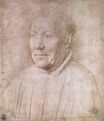 |
 |
 |
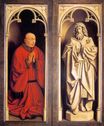 |
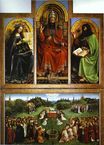 |
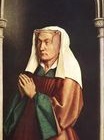 |
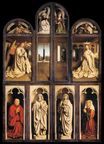 |

Donor and St. John the Baptist 1432
oil on wood
St. Bavo Cathedral, Ghent, Belgium
<< Previous G a l l e r y Next >>
From Wikipedia, the free encyclopedia:
Jodocus (known as Joos) Vijd was a wealthy merchant and came from a family that had been influential in Ghent for several generations. His father, Vijd Nikolaas (d. 1412), had been close to Louis II of Flanders. Jodocus was one of the most senior and politically powerful citizens of Ghent. He was titled Seigneur of Pamele and Ledeberg, and in a difficult and rebellious political climate, became one of the Duke of Burgundy Philip the Good's most trusted local councilmen. Around 1398 Jodocus married Lysbette Borluut, also from an established city family. The couple died childless and the endowment to the church and the commissioning of such an unprecedentedly monumental altarpiece were intended for a number of reasons, primarily to secure a legacy. But, according to Borchert, also to "secure his position in the hereafter" and, important to such an ambitious politician, demonstrate his social prestige, revealing, Borchert believes, a desire to "show off and ... outstrip by far all other endowments to St John's, if not each and every other church and monastery in Ghent."
Ghent prospered through the early 15th century, and a number of local councilors sought to establish a sense of independence from Burgundian rule. Philip was in financial difficulty, and asked the city for revenue, a burden many city councilors felt unreasonable and could ill afford, financially or politically. The situation became tense, and because there was division within the council over the burden, this led to a mistrust that meant council membership was dangerous and precarious. During a power play in 1432 a number of councilors were murdered, seemingly for their loyalty to Philip. Tensions came to with head in a 1433 revolt, which ended with the beheading of the councilors who had acted as ringleaders.
Throughout Vijd stayed loyal to Philip. His position as warden at St. John the Baptist's church (now Saint Bavo Cathedral) reflects this; the church was favoured by the Burgundians for official ceremonies held in Ghent. On the day of the altarpiece's consecration, 6 May 1432, Philip's and Isabella of Portugal's son was baptised there, indicating Vijd's status at the time.
As warden (kerkmeester) of St. John's, Vijd between 1410 and 1420 not only financed the construction of the principal chapel's bay, but endowed a new chapel off the choir, which took his family name and was regularly to hold masses in his and his ancestors' memory. It was for this new chapel that he commissioned Hubert van Eyck to create an unusually large and complex polyptych altarpiece. He was recorded as donor on an inscription on the original, now lost, frame. The chapel was dedicated to St. John the Baptist, whose traditional attribute is the Lamb of God, a symbol of Christ.